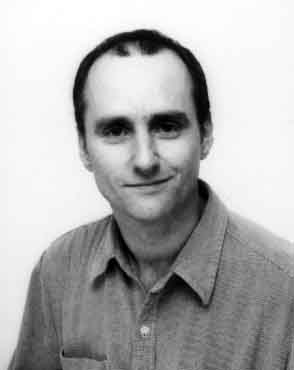
|
Robert Percy
True
Story
for
string quartet
duration: 5 minutes
|
True Story
Important to this piece are the notions of speech pattern and physical
gesture. The intention was to write a short piece for string quartet which
featured the players individually, rather than maintaining a democratic
unity throughout. The result of this is the recurring cello solo, and
also the violin and viola passages which are based on the pitch and rhythm
of speech.
The cello solos, which constitute four of the work's seven sections, begin
and end the piece and also introduce each of the three remaining sections,
each time with an ascending glissando. The outer two of these three sections
include, respectively, the 1st violin and the viola 'speech' passages,
and they present alternative accompanimental approaches: the former section
involves timbral variation on a single sustained pitch, and the latter
section is the realisation as an accompaniment of the tutti pizzicati
which are present throughout the work.
In contrast with the other sections, the central section focuses on an
ensemble element. It comprises a series of gestural surges which are set
off by double stopped ascending glissandi, usually in the cello.
Born in 1961, Robert Percy grew up in the
suburbs of South West London. Through his teens he developed an interest
in drawing, particularly in producing portraits of the black musicians
whose music he listened to. He left school at 16 and, after spending six
months as a shelf-stacker at a local supermarket and six months as a clerical
assistant, he began a five year draughtsman's apprenticeship for an engineering
firm in Brentford. During this time he began to teach himself to play
Jazz guitar. In 1983 he completed his apprenticeship and then cycled to
the south of France. For the next three years he alternated between working
as a contract draughtsman, travelling abroad, and studying the guitar.
In 1985 he committed himself to full-time musicianship. As well as teaching
guitar, he worked as a guitarist in various lesser-known, London-based
function bands, big bands, jazz ensembles, and duos.
During this period he wrote increasingly for the jazz groups and big bands
in which he played. In 1992 his feelings of inadequacy about contrapuntal
and compositional technique led him to begin evening classes in harmony
and counterpoint. At about this time he formed the jazz ensemble Art
in a State, for which he wrote music which combined compositional
techniques, acquired at the evening classes, with improvisation, and with
the soul, funk, latin and jazz fusion rhythms he had listened to since
his teens. In 1996 he began a music degree at City University, passing
with a first in 1999.
He now lives in north London with his partner and two children. He is
studying as a PhD composer under Rhian Samuel at City University, where
he is also a visiting first year composition lecturer. He continues also
to teach guitar.
He has had pieces performed in workshops given by Jane Manning & Manning's
Minstrels, Skaila Kanga, the Archinta String Quartet, and the Kreuz String
Quartet. He had a piece selected for performance by the Brunel Ensemble
in the 1999 BMIC Cutting Edge Workshops series. He has also had pieces
performed at the 1998 & 1999 Park Lane Group London Colleges' Composers'
Symposium, at the Queen Elizabeth Hall, South Bank, London.
In July 1999 he participated on the International Course for Professional
Choreographers and Composers at Breton Hall, and in February 2000 bodies.notes,
a collaboration with choreographer Julia Hole, was performed at the Place
Theatre, London. His piece True Story has been shortlisted by the spnm
for the 2000/01 season.
He has recently completed two music-theatre pieces, for flutes and clarinet,
and for solo treble recorder. He is currently working on a piece for string
quartet and tape, and is also planning a piece for orchestra.
Back to shortlist.
|

|